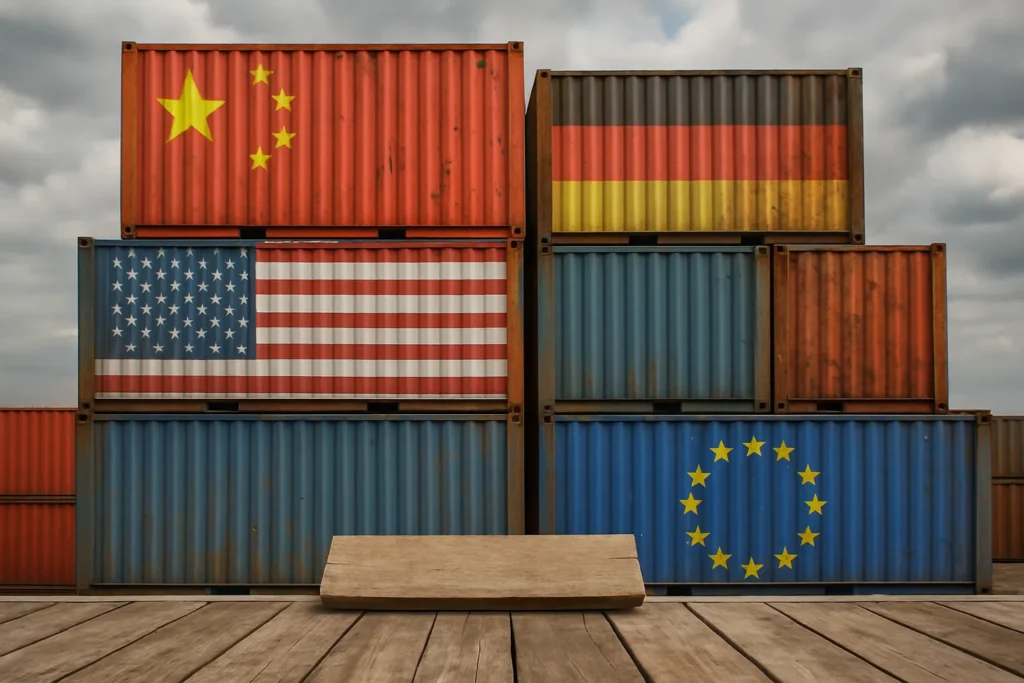The High-Stakes Gamble: Trump’s Tariff Escalation
In the tumultuous landscape of U.S. economic policy, few moves have carried as much global consequence—or generated as much head-spinning ambiguity—as President Donald Trump’s rollercoaster approach to tariffs. In early 2018, Trump heralded a new era of so-called “America First” trade, slapping hefty tariffs on imported steel, aluminum, and later autos, under the guise of national security and economic revival.
The president’s strategy was bold, if not brash: 25% tariffs on cars from Canada and Mexico, 10% duties on Chinese goods, and an almost daily threat of further escalation. The message to trading partners was clear in tone but muddled in content. One day attacking China’s trade imbalances, the next leveraging tariffs to force Mexican authorities to clamp down on immigration, the administration’s stance blurred lines between economics and foreign policy. Trump’s team argued these measures would restore manufacturing jobs and punish unfair trade, yet both the intent and execution would soon face severe scrutiny.
Financial markets lurched in response to Trump’s unpredictable tweets and executive orders. According to a 2019 analysis by the Peterson Institute for International Economics, the mere announcement of new tariffs led to trillions of dollars in stock market volatility—not exactly a sign of strength for Main Street or Wall Street. U.S. manufacturers and farmers, once promised a renaissance, quickly saw supply chains disrupted, input costs rise, and export markets shrink under the weight of retaliatory foreign duties.
Beyond domestic ripples, the tariff gambit rapidly complicated global alliances and sowed distrust abroad. Allies like Canada and the European Union bristled at being labeled economic threats. “The rules-based international system is on life support,” lamented trade expert Susan Schwab, a former U.S. trade representative, in a 2020 Foreign Affairs interview.
Backtracks and Broken Promises: The Recurring Pattern of Climbdowns
Historical precedent abounds for leaders using tariffs as leverage, but few have wielded them with such rhetorical whiplash. In an attempt to sell economic nationalism, the Trump administration signed a high-profile memorandum demanding strict reciprocal tariffs—duties precisely mirroring what U.S. goods faced overseas. The reality fell far short: rather than clear symmetry, the executive order baked in extensive exemptions, including for copper, pharmaceuticals, semiconductors, and critical minerals. The list of carve-outs only grew as powerful domestic lobbies and multinational corporations lobbied for relief.
The so-called “permanent” 25% auto tariff, initially presented as non-negotiable, quickly became a bargaining chip. Trump’s aides touted the measure as central to jobs and national security. Yet key sectors—including energy, lumber, and components necessary for U.S. manufacturing—were ultimately exempted. A closer look reveals that critical industries were, in effect, shielded from the very pain inflicted elsewhere. Despite claims of no exceptions, the White House’s flagship policy became Swiss cheese upon contact with reality.
The calculus behind these moves drew criticism for its elementary approach. Instead of leveraging detailed trade models or sophisticated analysis, the administration’s reciprocal tariff formula often boiled down to dividing a country’s trade surplus by export value, a practice derided as “astoundingly simplistic” by economist Chad Bown, writing for the Brookings Institution. As cracks appeared in the administration’s resolve, headline-grabbing threats yielded to softer, often backpedaling rhetoric.
“What started as a pledge of ironclad resolve soon devolved into a patchwork of exceptions, delays, and policy reversals—leaving businesses and allies uncertain and U.S. credibility diminished.”
The damage was more than economic. Unsteady leadership on trade exposed the nation to charges of unpredictability and isolationism. Allies such as Germany and Japan, disillusioned by the lack of consistent engagement, deepened partnerships with each other and even China, creating space for American competitors in the global order.
Seeking Stability: Policy Climbdowns and the Illusion of Strength
Over time, the administration’s self-styled disruption gave way to a newfound pragmatism—at least in rhetoric. The much-touted U.S.-China “phase one” trade deal was not, as promised, a victory lap for American farmers or a comprehensive fix for decade-old imbalances; rather, it was largely a face-saving de-escalation. The deal secured modest Chinese purchases of U.S. goods in exchange for halting some tariff increases, a climbdown by any measure of earlier bravado.
Beyond China, the White House softened its approach toward other flashpoints. Threats to oust Federal Reserve Chair Jerome Powell were shelved. Attitudes toward Ukraine shifted to a more conciliatory tone after direct talks with President Zelensky. According to Deutsche Bank analyst George Saravelos, these pivots may help contain market volatility, though the cost to U.S. standing remains incalculable.
The lessons here run deeper than policy specifics. Short-term wins through shock and awe may generate headlines, but when the dust settles, the U.S. is left with diminished international trust and a skeptical business community. What does it mean when a superpower prioritizes bluster over stability? Harvard economist Dani Rodrik observes that, “Effective trade policy requires both vision and predictability—qualities increasingly missing from U.S. leadership in recent years.”
Policy should foster confidence in the rules of the economic game, not subvert them for political point scoring. During America’s postwar economic boom, strong alliances and fair, predictable rules undergirded both prosperity and global influence. By contrast, the spectacle of tariff threats and backtracks → all the uncertainty with few tangible gains.
Modern progress demands leaders who choose clarity over chaos, partnership over provocation. For those who believe in equality, open markets, and shared prosperity, Trump’s tariff saga is a searing reminder of what’s at stake when political expedience trumps sound policy.

